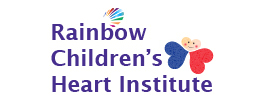When it comes to pediatric heart conditions, treatments must always be planned with long-term health in mind. If heart surgery is required for a newborn, it is essential to intervene aggressively and early for correcting the defects. The reconstruction or repair tends to improve as your child grows and the recovery is faster as well. The best heart surgeon in Hyderabad would prefer to follow this approach, which is known as early primary repair.
A lot of heart programs usually suggest waiting for newborns to grow a bit older before they perform heart surgery. However, the health consequences your child may have to suffer from are greater if you wait longer. A majority of pediatric cardiovascular surgeries in India are performed on babies less than a year old. Most of these surgeries are even on newborns less than a month old.
Congenital and Acquired Heart Defects
A congenital heart defect is an issue found with the structure of the heart. These defects occur during the formation of the heart in a baby. It is amongst the most common types of birth defects found in India.
An acquired heart defect, on the other hand, are heart defects that take place after children are born. Commonly, these occur when children suffer from specific illnesses.
Some of the most common pediatric heart conditions and their respective treatments are mentioned below. Before you look for the best heart surgeon in Hyderabad, you should learn about these conditions and the types of treatments pediatric heart surgeons perform.
Aortic coarctation
This is the condition where the aorta narrows down. Treatment for the condition involves the insertion of a stent into the vessel that is narrowed for keeping it open. The narrowed parts can also be surgically removed.
Aortic valve stenosis
This happens when a heart valve becomes misshapen or deformed and gets too narrow for the proper flow of blood. It is often treated by performing surgical and non-surgical valve replacement. A balloon valvuloplasty may also be performed, which involves a balloon being used for opening the valve.
Arrhythmia
Irregular heart rhythm, or arrhythmia, can be treated using medications. Other options include implantation of a pacemaker, which is a device inserted in the body for regulating heart rhythm, or a defibrillator, which is a device that provides electrical energy to the heart. The tissue that is causing the arrhythmia can be surgically removed or catheter ablation can be performed, which removes the area that is causing the arrhythmia non-surgically.
ASD or Atrial Septal Defect
This condition involves a hole in the upper chamber walls of the heart. Initial treatment of the condition usually involves observing and monitoring, with the use of medications for reducing the symptoms. If the need arises, the hole can be surgically or non-surgically closed in the cardiac catheterization lab.
Cardiomyopathy
It is a condition where the heart becomes stiffened and thickened or enlarged, making it unable to pump blood properly. Cardiomyopathy can be treated with medications as well as surgery for removing the areas that cause the condition. A defibrillator or a pacemaker may additionally be implanted for regulating the heart rhythm of your child.
Endocarditis
Endocarditis is an infection of the heart. In most cases, this condition is treated using medications. However, if the medications do not work effectively, surgery is a treatment option your doctor may suggest.
Hypoplastic left heart syndrome
It is a congenital heart condition in which there is an incomplete development of the left side of the heart. The use of medications may help in stabilizing the heart and the flow of blood. If you are consulting the best cardiologist, he/she might suggest a long-term treatment plan which involves a series of surgeries for reconstructing the heart. You just need to search a pediatric cardiologist near me to find the best doctor near you.
Kawasaki disease
This disease causes the blood vessels in the body to get inflamed, including the ones around the heart. In most cases, medications can help treat the disease but surgery may be needed as a part of the treatment.
Marfan syndrome
This condition causes the connecting tissue in the heart to weaken. Marfan syndrome can be treated using medications, although surgery may be required in some cases of repairing the aorta or replacing a heart valve.
